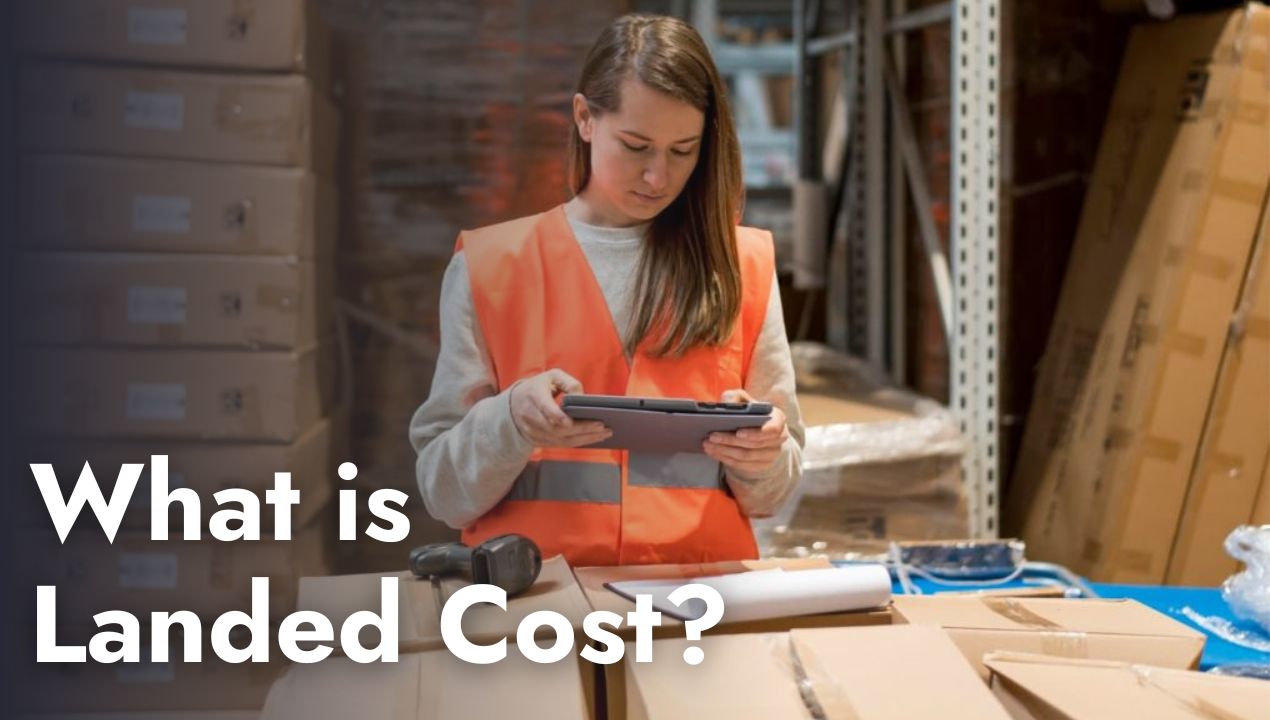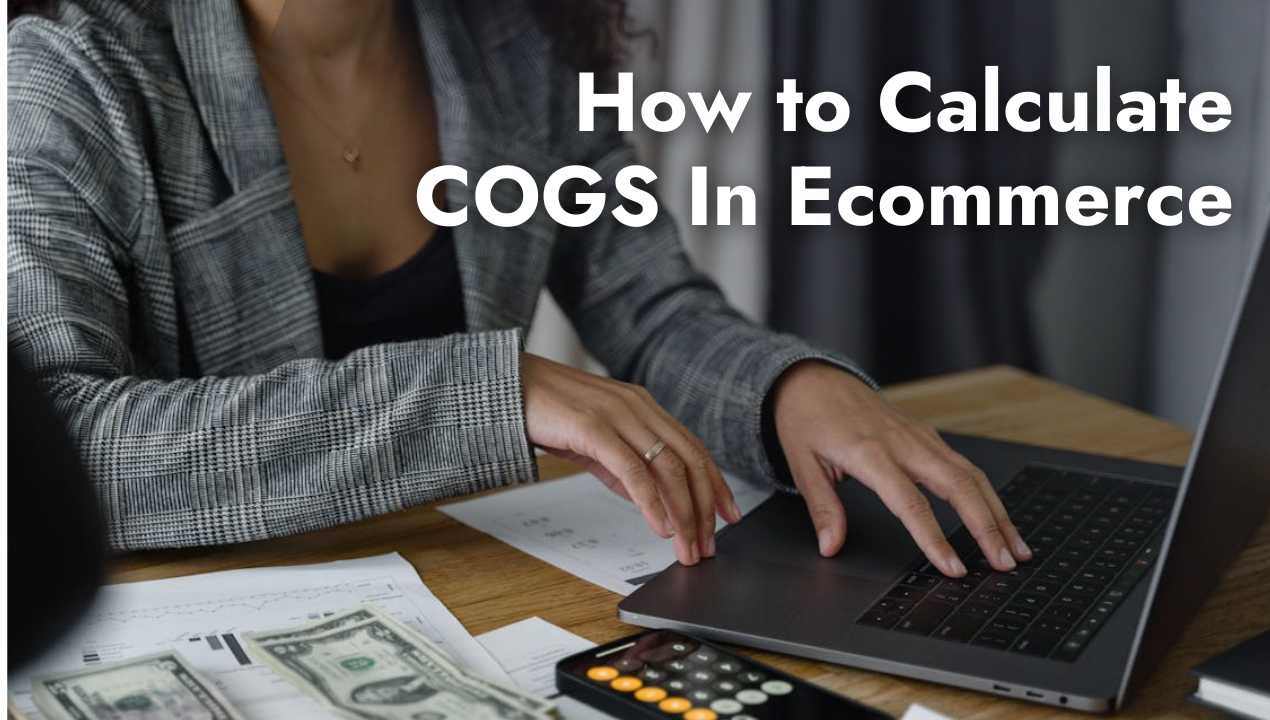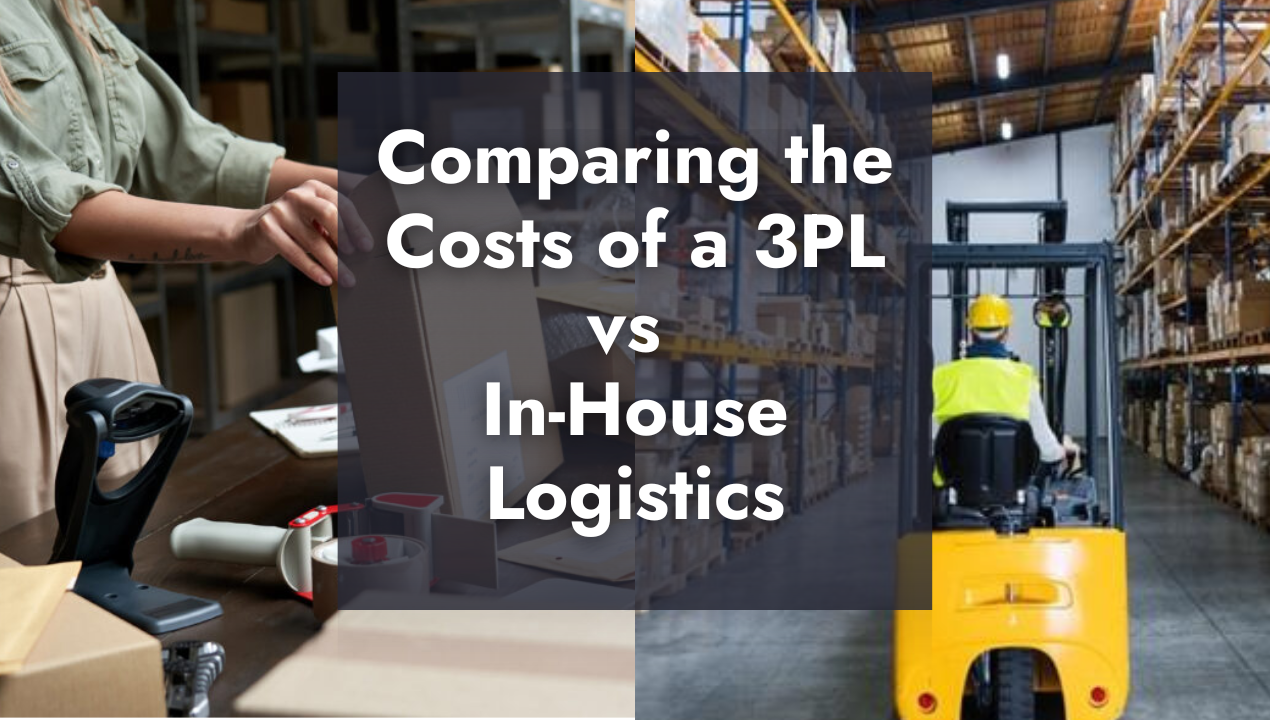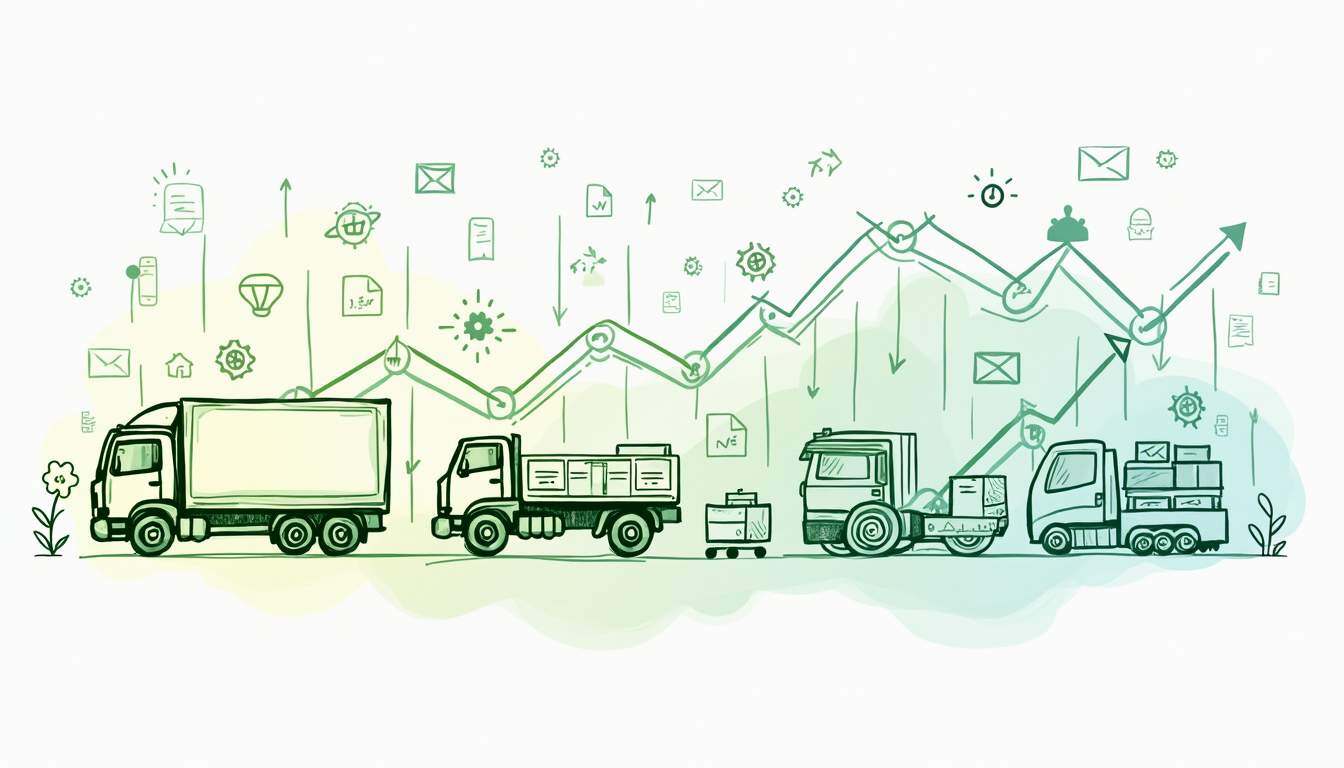Share this
What Is Landed Cost? How To Calculate Your Landed Cost
by Rin Mosher on Apr. 26, 2024

Ecommerce businesses always price their products with a healthy profit margin in mind – but that profit may not be entirely realized when failing to account for total landed cost. What is landed cost, exactly? And how can it affect the profitability of your ecommerce business?
An important term in supply chain financial planning, this metric illustrates how much a business is truly paying to manufacture, receive, and deliver products. In this article, we discuss how landed cost is determined, the factors that influence it, and what measures can help you effectively manage your landed cost to boost profitability.
What Is Landed Cost?
Landed cost, also known as total landed cost, is a financial term that refers to the total price paid for an imported product. It includes not only the actual purchase price of the product but also all other expenses associated with bringing it to its final delivery address, including shipping fees, customs duties, import taxes, insurance costs, currency conversion rates, and storage fees at ports or warehouses.
First Cost vs. Landed Cost
Landed cost shouldn’t be confused with “first cost,” a related but separate metric also used in logistics planning. First cost refers to the initial purchase price of a product and only takes into account the expenses associated with manufacturing and packaging.
Landed cost is a more comprehensive measure that includes all additional costs associated with getting a product from its point of origin to its final destination. As such, landed cost can serve as a telling indicator of overall supply chain economic health.
Businesses refer to total landed cost to accurately assess the true cost of their products. This figure helps with making informed decisions about pricing, sourcing, and international shipping arrangements. It also has the potential to uncover areas of hidden or bloated expenses that would have otherwise gone unnoticed.
Landed Cost In Ecommerce
Representing a large portion of total spending, landed cost per unit has the potential to significantly impact an ecommerce business’ profitability. If a company fails to consider all of the expenses that are associated with producing and selling items, it may end up selling products at unsustainable prices – and end up losing money in the long run.
Here’s an example to illustrate:
Manufacturing and packaging give a hair care kit a first cost value of $40. The ecommerce store selling this item sets the retail price at $50, expecting $10 in profit per sale.
Initially, this profit margin seems feasible if the cost estimate includes all potential fees and charges. However, because there are often other expenses within the supply chain, the business might actually be paying more than the first cost value of $40 per product.
Suppose customs, insurance, and handling fees each tack another $4 onto each product. That would bring the landed cost to $52, resulting in a loss of $2 for every hair care kit sold.
A loss of $2 per box multiplied by 100 or 1,000 orders per month is a huge loss and a significant amount of money that could be used for business growth activities like marketing, customer service, or product development.
This is more of an obvious example, but it shows how using the first cost value instead of the total landed cost to inform product pricing can have significant implications on profitability down the line.
Factors That Contribute to Landed Cost
Because it encompasses virtually every cost in a product’s journey across the supply chain, landed cost considers – and can therefore be influenced by – a long list of factors. These include:
Manufacturing Costs
Manufacturing costs include all of the expenses that come with making a product, from raw materials and labor to other overhead costs. These costs can vary depending on your suppliers' production processes, sourcing strategies for materials, technology used, regulatory compliance costs, and energy prices.
Packaging Costs
Packaging costs cover all expenses involved in ensuring that goods are well-protected and properly presented for delivery to the customer. This includes materials, assembly, and any additional fees such as labeling, customization, and dunnage. Additional warehouse projects like bundling and kitting can also add to packaging costs.
Shipping and Freight Costs
The average product travels extensively before reaching a customer’s doorstep, moving from the manufacturer through various transit points including ports and fulfillment centers. Each leg of this journey incurs costs based on factors like package weight, volume, and the distance covered.
Third-party logistics (3PL) companies use software to optimize shipping costs based on the dimensional weight pricing system most carriers use. As large customers of these shipping carriers, established 3PLs are often able to negotiate discounted shipping rates for clients. Ecommerce sellers of all sizes can save even more time and money by using a 3PL’s freight forwarding team to manage transit fees and costs on their behalf.
Insurance
Potential damages or losses during transportation are inevitable, which is why ecommerce businesses often invest in insurance for their packages. Insurance rates are determined by the value of the goods being shipped, as well as the destination and mode of transportation. Higher insurance rates can significantly impact landed cost. Yet at the same time, choosing to forgo insurance means potentially incurring the expenses that come without coverage, such as replacement costs for damaged goods.
Pick and Pack Fees
These fees pay for the labor associated with locating, gathering, preparing, and packing orders in a fulfillment center. This cost can vary depending on whether fulfillment is done in-house or by a 3PL. The former case is often more expensive as it requires significant investments in staff, software, and other infrastructure in order to successfully fulfill a larger order volume. Working with established 3PLs that have the infrastructure and expertise already in place allows ecommerce businesses to take advantage of cutting-edge fulfillment processes for a predictable cost.
Exporting/Importing Fees
There are several costs associated with exporting and importing goods, which can vary depending on where a package is being shipped from and to. Customs fees cover the costs of processing goods through the customs authorities of receiving countries, while Value Added Tax (VAT) and Goods and Services Tax (GST) are imposed on the value of imported goods by the destination country. Other additional fees may include duty taxes and handling charges.
Exchange Rates
Exchange rates can greatly impact the final price of a product when importing or exporting. For example, a strong currency in one country may result in higher prices for imported goods, while a weaker currency could mean lower costs. It is important to keep track of exchange rates when engaging in international trade to ensure accurate pricing and avoid unexpected expenses.
How to Calculate Landed Cost
As has been established, calculating landed cost is an essential practice for any ecommerce seller with an interest in protecting its profit margins. The numbers that go into the equation can vary depending on the types of expenses your business operations incur.
The factors behind landed cost can be broken down into four core categories:
- Product cost (e.g. manufacturing and packaging)
- Shipping and freight costs (e.g. transport from supplier to warehouse or from warehouse to customer)
- Customs and duties (e.g. customs fees and value-added tax)
- Overhead costs (e.g. currency conversion rates, payment processing fees, and bank charges)
While not required, it’s also best practice to incorporate a margin to account for insurance fees and other expenses that mitigate risk across the order journey.
Landed Cost Formula
Production, shipping, customs, and duties are then added using the following formula.
Landed Cost = Unit Cost of Product + Shipping + Customs + Risk + Overhead
Landed Cost Calculation Example
To better understand how to calculate landed cost, let's walk through an example.
Company A is a small ecommerce business that sells handmade scarves from India. Their supplier charges them $30 per scarf, and it costs an additional $5 to ship each scarf from India to their warehouse in the US.
When the scarves arrive at customs, Company A is charged a 10% customs duty fee, which amounts to $3 per scarf. The company also has a 5% risk margin built into its pricing strategy to account for any unforeseen expenses or losses. Finally, they have an overhead cost of $10 per scarf that includes expenses like banking and administrative fees.
To calculate the landed cost of their scarves, Company A would use the following formula:
Landed cost = $30 (unit cost) + $5 (shipping/freight) + $3 (customs duty) + $2.50 (risk margin) + $10 (overhead cost)
Landed cost = $50.50 per scarf
The information provided by landed cost makes it much easier to come to confident decisions on product pricing. Company A would need to charge more than $50.50 per scarf to make a profit, which may or may not make sense depending on how much the target market is willing to pay for a single scarf.
In cases where an economical price is indeed too high, landed cost can identify opportunities for optimization within the supply and fulfillment process. Looking at expenses on a compartmental level allows businesses to compare their spending across service providers and seek out better rates wherever possible.
Need Fulfillment Support?
Landed cost can help your business make well-informed pricing decisions by providing a realistic picture of shipping and fulfillment costs across the supply chain. The calculation process may be multi-tiered, but mastering it is a critical first step in keeping unnecessary spending to a minimum.
Partnering with a trusted 3PL like Shipfusion can help keep your landed costs low by handling your ecommerce fulfillment. With our packaging optimization technology, exclusive shipping rates due to industry relationships with carriers, and efficient freight forwarding services, we help you optimize your fulfillment so you can focus on growing your business. Learn more about our worry-free fulfillment solutions.
Share this
You May Also Like
These Related Articles

How to Calculate COGS In Ecommerce

Comparing the Costs of a 3PL vs In-House Logistics

Ecommerce Fulfillment Cost Optimization Strategies You May Have Missed
- April 2025 (9)
- March 2025 (26)
- February 2025 (26)
- January 2025 (37)
- December 2024 (16)
- November 2024 (23)
- October 2024 (22)
- September 2024 (27)
- August 2024 (9)
- July 2024 (8)
- June 2024 (5)
- May 2024 (8)
- April 2024 (8)
- March 2024 (6)
- February 2024 (6)
- January 2024 (5)
- December 2023 (3)
- November 2023 (3)
- October 2023 (5)
- September 2023 (4)
- August 2023 (2)
- July 2023 (1)
- June 2023 (4)
- March 2023 (2)
- October 2022 (1)
- September 2022 (5)
- August 2022 (4)
- July 2022 (7)
- June 2022 (4)
- May 2022 (4)
- April 2022 (6)
- March 2022 (2)
- February 2022 (1)
- January 2022 (3)
- December 2021 (2)
- November 2021 (4)
- October 2021 (2)
- September 2021 (5)
- August 2021 (4)
- July 2021 (4)
- June 2021 (3)
- May 2021 (2)
- April 2021 (3)
- March 2021 (3)
- February 2021 (3)
- January 2021 (2)
- December 2020 (4)
- November 2020 (2)
- October 2020 (4)
- September 2020 (2)
- July 2020 (5)
- June 2020 (4)
- May 2020 (2)
- April 2020 (2)
- March 2020 (4)
- February 2020 (1)
- December 2019 (1)
- May 2018 (1)
- March 2018 (2)
- February 2018 (3)
- January 2018 (3)
- November 2017 (3)
- July 2017 (4)
- March 2017 (3)
- February 2017 (5)
- January 2017 (3)
- December 2016 (4)
- November 2016 (6)
- October 2016 (6)
- October 2015 (1)
- September 2015 (1)
- June 2015 (3)
- May 2015 (3)
- August 2014 (1)
- July 2014 (1)
- March 2014 (1)
- February 2014 (1)